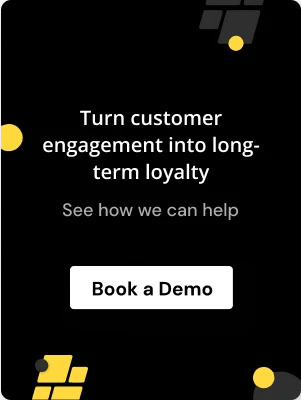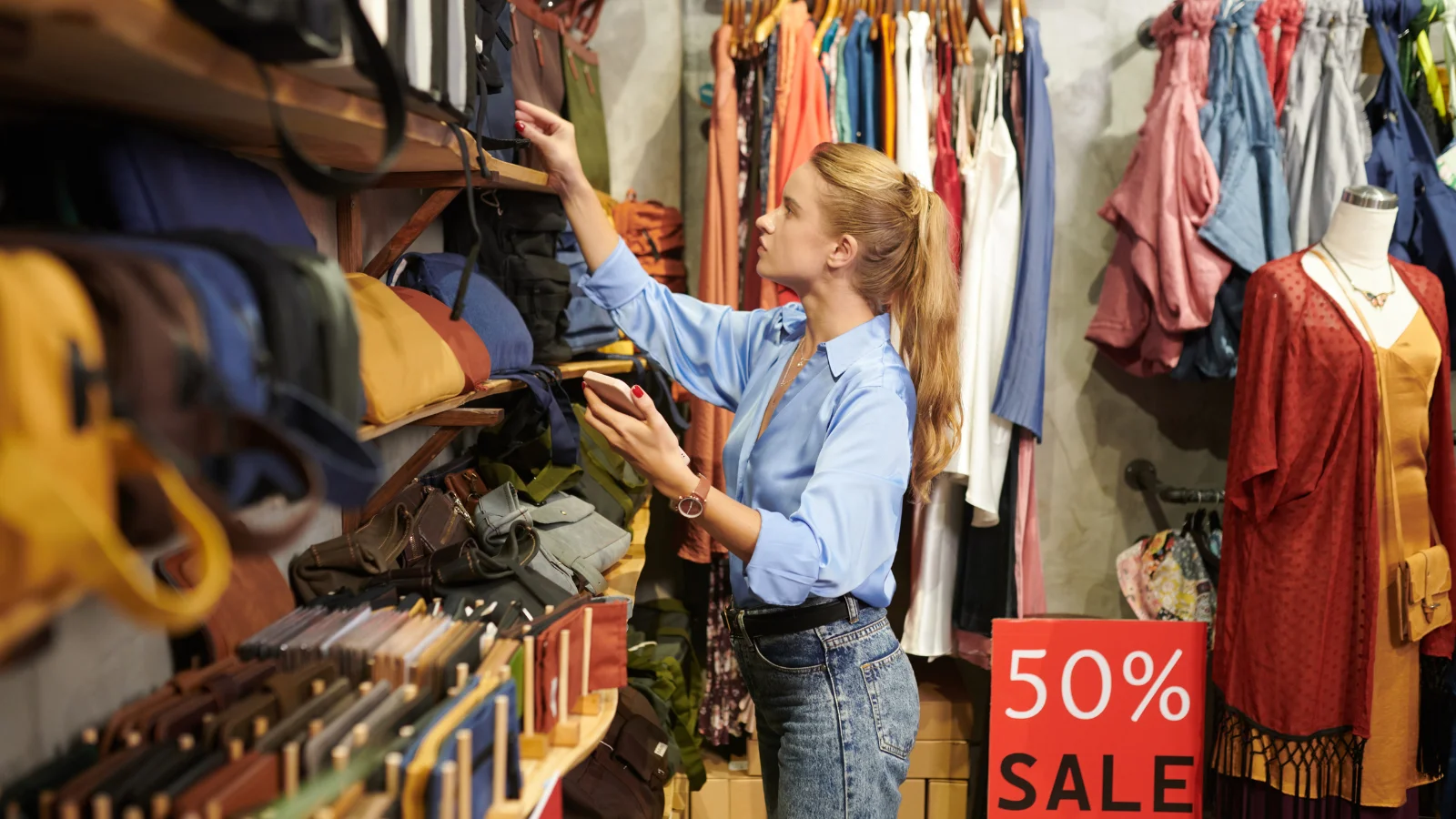.avif)
.avif)
Customer Acquisition Cost (CAC) is the linchpin of sustainable Shopify growth. On average, e‑commerce brands spend about $70 to acquire a new customer, though that range can vary significantly by niche, from roughly $53 to over $90, depending on the category.
As paid ads grow pricier and competition heats up, mastering CAC is critical to maintaining healthy margins. High CAC eats into your profits, making it harder to scale, even when sales are growing, unless you’re converting efficiently and retaining customers over time.
This article demystifies CAC and delivers 13 proven, actionable strategies designed specifically for Shopify merchants. You’ll learn exactly how to lower customer acquisition costs and turn every marketing dollar into long-term revenue.
What Is Customer Acquisition Cost (CAC)?
CAC is the total amount you spend to bring in a new customer. It includes your marketing expenses, like ads, influencer campaigns, and email software, as well as any sales costs tied to converting that customer.
To calculate CAC, simply divide your total sales and marketing spend by the number of new customers acquired during that time:
CAC = Total Marketing & Sales Spend ÷ Number of New Customers
This number helps you understand how much each customer truly costs and whether your growth is actually profitable.
For deeper insight, compare CAC to your Customer Lifetime Value (CLTV). A healthy LTV:CAC ratio is typically 3:1, meaning you're earning three times what you spent to acquire the customer. If CAC is too high, you're likely scaling at a loss, something no Shopify brand can afford for long.
Also read: Maximizing Growth with CLV: A Strategic Loyalty Approach
Why It’s Important to Lower Customer Acquisition Costs in 2025
Acquiring new customers in 2025 is expensive. Ad platforms like Meta and Google have seen year-over-year cost per mile increases, while emerging channels like TikTok are becoming saturated fast.
With more Shopify brands bidding for the same customers, costs are rising, and so is the competition. At the same time, many eCommerce businesses are facing tighter margins and shifting consumer loyalty, making it harder to recoup acquisition spend over time.
That’s why lowering your CAC today is essential for profitability. High CAC means you're spending more to earn less unless every customer converts and sticks around. But by optimizing how you acquire and retain shoppers, you create a more sustainable growth model, one where you can scale without burning through budget.
In a landscape this competitive, efficiency is the new advantage. So, let us take a close look at some strategies you can use to reduce CAC and grow your brand sustainably.
13 Proven Ways to Lower Customer Acquisition Costs
Lowering your customer acquisition cost doesn’t require cutting corners or shrinking your budget. A better strategy is to spend smarter, not necessarily less. From optimizing your ad strategy to building loyal, repeat customers, small shifts can lead to major savings.
Here are 13 proven ways Shopify brands can reduce CAC while fueling long-term growth.
1. Target the Right Audience with Precision
One of the fastest ways to lower your CAC is by ensuring your ads reach the people most likely to buy. Broad targeting wastes budget on low-intent users, while precise segmentation, based on demographics, behavior, or past purchase patterns, helps you attract high-converting customers from the start.
Platforms like Meta Ads and Google offer advanced targeting tools, but Shopify audiences can take it even further by leveraging store data.
Tip: Use look-alike audiences based on your highest-value customers to reach similar, purchase-ready shoppers.

2. Launch Retargeting Campaigns
Not every shopper converts on the first visit, and that’s where retargeting shines. By serving ads to users who’ve browsed your store, added to cart, or viewed a product, you stay top-of-mind and guide them back to complete their purchase.
Retargeting is typically more cost-effective than cold traffic since you’re re-engaging people who’ve already shown interest.
Tip: Set up dynamic retargeting ads that automatically showcase the exact products a visitor viewed, boosting relevance and conversion rates.

3. Optimize Your Website for Conversions
Driving traffic is only half the battle; if your site doesn’t convert, your CAC will stay high no matter how much you spend. From slow load times to confusing navigation or unclear calls-to-action, even small friction points can lead to big drop-offs.
A conversion-optimized website ensures more visitors turn into paying customers, maximizing the return on every marketing dollar.

4. Increase Customer Retention and Repeat Purchases
Acquiring new customers is important, but retaining them is what truly lowers your long-term CAC. When shoppers come back to buy again, their initial acquisition cost gets spread across multiple purchases, improving your profit margins.
Loyalty programs, post-purchase email flows, and excellent customer service all play a role in keeping customers engaged and coming back.
Tip: Use a tool like Nector to create a fully branded loyalty program that rewards repeat purchases with redeemable points or perks, encouraging long-term engagement without increasing your acquisition spend.

5. Use Marketing Automation and Email Flows
Marketing automation helps you nurture leads and convert visitors without constantly increasing ad spend. Email flows, like welcome series, abandoned cart reminders, and post-purchase follow-ups, keep your brand front-of-mind and guide shoppers through the buying journey.
These touchpoints are cost-efficient, personalized, and often drive higher ROI than paid channels.
Tip: Build segmented email flows in Klaviyo or Omnisend that tailor messages based on customer behavior so each email feels relevant and timely without extra manual effort.

6. Start a Referral Program That Rewards Loyalty
Referrals are one of the most cost-effective ways to acquire new customers because your existing customers do the work for you. When loyal shoppers share your brand with friends, it builds trust and drives high-intent traffic at a fraction of paid ad costs.
The best part? Referred customers are often more valuable and easier to retain.
Tip: Use Nector to launch a fully automated referral program on Shopify. You can reward both the referrer and the new customer, turning loyalty into a powerful growth engine.

7. Test and Improve Ad Creatives Regularly
Ad fatigue is real! When shoppers see the same visuals and messaging over and over, performance drops, and your CAC rises. Continuously testing different creatives helps you identify what actually resonates with your audience, keeping engagement (and conversions) high.
Even small tweaks to headlines, images, or calls-to-action can lead to significant improvements in click-through and conversion rates.
Tip: Run A/B tests on your top-performing ad sets weekly, and double down on the creatives that drive the lowest cost-per-acquisition.

8. Allocate Budget to the Best Performing Channels
Spreading your budget too thin across every platform can lead to wasted spend and inflated CAC. Instead, focus your investment on the channels that consistently bring in the highest-quality traffic and conversions.
Analyze where your most profitable customers are coming from, be it Meta, Google, TikTok, or email, and double down on what works.
Tip: Use UTM tracking and Shopify’s attribution reports to identify your top-performing channels, then shift more budget toward those with the lowest cost per acquisition.

9. Invest in SEO and Organic Content
Paid ads may bring quick wins, but SEO builds long-term traffic that doesn’t eat into your CAC. By optimizing your product pages, blog content, and site structure for relevant keywords, you attract high-intent shoppers who are actively searching for what you sell.
Organic content also builds trust and authority and is a key driver of conversion.
Tip: Start a blog targeting keywords around your niche (e.g., “best skincare routine for dry skin”) and link to relevant products to drive traffic and sales without ad spend.

10. Streamline Your Checkout Process
A complicated or clunky checkout is one of the fastest ways to lose a customer and increase your acquisition cost in the process. If shoppers abandon their carts right before converting, you’re paying for traffic that doesn’t turn into revenue.
A fast, intuitive, and mobile-friendly checkout flow reduces friction and boosts conversion rates.
Tip: Use Shopify’s one-page checkout or enable accelerated options like Shop Pay, Apple Pay, or Google Pay to make purchasing seamless, especially for mobile users.

11. Track CAC and LTV Metrics Frequently
You can’t lower what you don’t measure. Regularly tracking your CAC and comparing it to CLTV helps you spot inefficiencies and improve campaign performance over time. If CAC starts creeping up or your CLTV drops, it’s a signal to refine your targeting, offers, or retention strategy before costs spiral.
Tip: Set a recurring monthly review to calculate your CAC and CLTV by channel and adjust your budget based on the highest-performing segments.

12. Try Pay-per-New-Customer Campaigns
Traditional ad models charge for clicks or impressions, whether or not they lead to sales. Pay-per-new-customer campaigns flip that model by charging only when a new shopper actually converts, making them a powerful way to lower CAC and reduce risk.
Shopify’s own Shop Campaigns, for example, help brands reach high-intent buyers directly within the Shop app, paying only for real results.
Tip: Test Shop Campaigns with a modest budget and monitor your cost-per-customer closely; it often outperforms standard PPC channels.

13. Think Long-Term, Not Just Per-Click
Focusing only on cost-per-click can lead to short-term wins but long-term losses. Instead, shift your mindset to CLTV. When you invest in building great experiences, post-purchase care, and retention strategies, you unlock more value from every customer you acquire.
A slightly higher CAC is perfectly fine if that customer sticks around, buys again, and refers others. That’s how you scale profitably.
Tip: Track your LTV:CAC ratio regularly. It’s one of the clearest indicators of sustainable growth and retention strength.

Lowering your CAC comes down to consistently improving how you attract, convert, and retain customers so every dollar you spend works harder and fuels long-term growth.
That’s where the right tools make all the difference, especially ones built to maximize retention and word-of-mouth growth.
Also read: ROI or Bye-Bye? The Real Value of Loyalty Programs Uncovered
How Nector Helps Lower CAC
Nector helps Shopify brands lower CAC by turning every shopper into a repeat buyer and brand advocate. With our customizable loyalty program, you can reward customers for purchases, reviews, and referrals, driving ongoing engagement and retention.
The referral system also offers customizable rewards, timely reminders, and built-in fraud prevention. It can be seamlessly embedded across key touchpoints, like the order confirmation page and loyalty widget, making it easy for customers to refer friends and amplify your reach.
Designed for seamless Shopify integration, Nector helps you grow smarter, reducing CAC by turning first-time buyers into loyal customers and making every acquisition go further.
How a Fast-Growing D2C Brand Used Nector to Drive Retention and Growth
One fast-growing D2C brand partnered with Nector to boost customer loyalty and expand its community through a unified loyalty and referral strategy. By rewarding purchases, signups, and referrals, they created an engaging customer experience that encouraged repeat sales and growth through word-of-mouth.
With Nector’s smooth integration and powerful features, the brand soon witnessed meaningful improvements in retention, engagement, and overall sales.
The results:
- 7.94% of total revenue was driven by loyalty program purchases
- 28.43% of customers made repeat purchases through loyalty incentives
- 26.12% referral completion rate, fueling steady new customer acquisition
These outcomes highlight how Nector’s extensive loyalty and referral solution can help Shopify brands reduce CAC, drive repeat purchases, and scale through customer-led growth.

Smarter Growth Starts with Lower CAC
Lowering customer acquisition costs is a strategic move that drives sustainable growth and long-term profitability. By focusing on the right audience, improving conversions, building retention, and using tools like automation, SEO, and referrals, you can make every dollar go further. The goal isn’t just to spend less but to spend wiser, turning one-time buyers into loyal, high-LTV customers.
That’s exactly where Nector helps. From referral programs to loyalty rewards and automation, Nector empowers Shopify brands to reduce CAC and boost lifetime value with less manual effort.
Ready to grow more efficiently? Book a demo and see how Nector can help lower your acquisition costs while building a stronger, more loyal customer base.
FAQs
What is the customer acquisition cost?
Customer acquisition cost (CAC) is the total amount you spend to acquire a new customer. This includes marketing expenses, advertising, sales team costs, and any other resources used to bring in new customers, divided by the number of customers acquired during that time period.
What is a healthy CAC?
A “healthy” CAC depends on your business model, margins, and customer lifetime value (LTV). As a rule of thumb, many successful eCommerce brands aim for an LTV:CAC ratio of at least 3:1, meaning a customer should generate three times more revenue than it costs to acquire them.
What does high acquisition cost mean?
High CAC usually indicates inefficiencies in your marketing or sales funnel. It could mean you’re spending too much on ads, targeting the wrong audience, or struggling with conversion. Left unchecked, it can erode profit margins and hurt long-term growth.
How to reduce your CAC?
You can reduce CAC by improving conversion rates, investing in organic channels like SEO and referrals, retaining customers through loyalty programs, and optimizing your ad targeting. The goal is to make each marketing dollar work harder while increasing the lifetime value of every customer.
Does CAC include salaries?
Yes, CAC can include salaries, especially for employees directly involved in sales and marketing. If your acquisition team is a key part of bringing in new customers, their compensation should be factored into your CAC calculation.
Start Building Customer Retention That Lasts


.avif)






